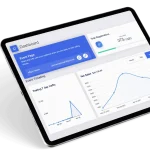
When it comes to measuring sales growth, few metrics have the potency of sales growth. It can rally the entire team behind a common goal. In fact, it can be used as a framework for interdependent metrics, too. The following are three key ways to measure sales growth. All three involve making performance metrics visible to team members. Ensure everyone knows what the goals are and how they are linked to the overall growth of the business. And, of course, sales growth is a crucial part of any revenue strategy.
The first step is to calculate revenue growth rates. The most basic way to calculate revenue growth is by multiplying the income of the company over time. To do this, you’ll need two similar time periods, with the same length and economic conditions. You’ll need to calculate each company’s growth rate over the past year, or at least the same period last year. Once you’ve calculated the growth rate for each period, you can use it to measure your company’s performance.
Once you’ve calculated your sales growth, you can use it to set goals that are realistic and achievable for your company. Revenue growth is an important metric for your business because without it, you’ll face a competitive edge over your competition. This is especially important if you’re trying to increase the value of your company’s stock, which is dependent on how fast you can increase sales. You can measure your sales growth by comparing revenue growth during two different fiscal periods, such as quarterly or monthly.
Then, look at the source of your sales growth. Are you getting new customers or repeat customers? Are you growing your customer base or reducing it? These factors will affect cash flow. Moreover, your sales growth will affect the stock price of your company, which will impact your overall profitability. With sales growth, you can measure your performance against the competition. You can measure your competitors and find out where to focus more attention. Then, you can focus on a particular customer that is consistently profitable.
Once you’ve figured out the source of your revenue growth, you can calculate the percentage of it that you’ve gained by using a simple formula. Take the revenue generated in the current period, and subtract it from the revenue in the previous period. For example, if you’ve grown sales by $500 from last year to this year, then the amount of the increase in sales is 500 divided by $2,000 last year. Then, multiply this result by 100 to get the percentage.
If you’re a small business, inorganic growth may be out of reach. If you have limited resources, opt for organic sales growth. Organic sales growth is generally slower than inorganic growth, but it’s still an excellent option. Although organic growth is slower, it still translates into significant revenue gains and tends to have a longer lasting impact. However, there are some important considerations before you choose which growth strategy is best for your business.






